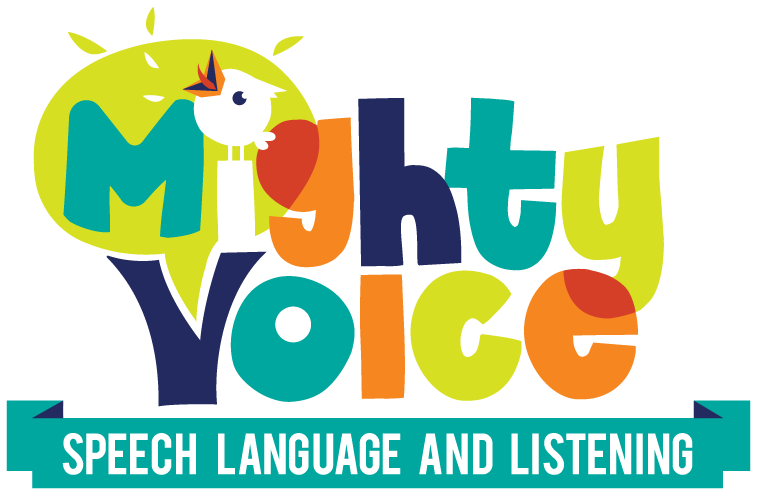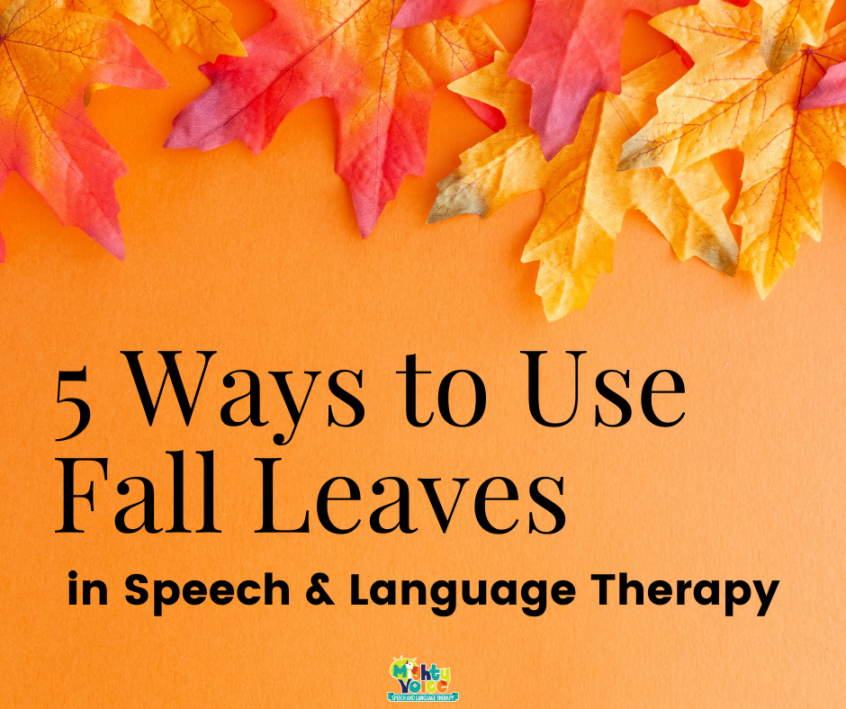I don’t know about you, but I love fall. I love the cooler temperatures, the colors of the leaves, and my very favorite–cardigans. I also love finding creative, easy ways to incorporate seasonal vocabulary and objects in my therapy sessions. If you live in a place where the leaves change color and fall from the trees, this one is for you. Here are 5 easy (and free!) ways to use those leaves to address your goals during speech and language therapy.
1. Make leaf rubbings
Making a leaf rubbing is a simple but fun activity that incorporates art while also being a language rich experience. To do it, you simply place a leaf under a piece of paper, and have the student color on top of the leaf. You can also lay a crayon on its side, and rub it back and forth over the leaf. If you place the leaf with its veins up, your rubbing will have more detail.
Think about all of the vocabulary you can teach while making a leaf rubbing–verbs like place, cover, rub, color, hold, and all of the descriptions of leaves including colors, textures, and more.
2. Compare and Contrast the Leaves
While a paper and pencil or online compare and contrast activity is great, there’s nothing more engaging than actually comparing and contrasting 2 objects that are right in front of you. For younger students, I like to start with easily visible attributes of leaves, like shapes or colors. To make it multisensory, I also like talking about how the leaves feel, smell, or sound when you touch them.
I like to use a framework like the expanding expression tool to help older students think about what might be the same or different about 2 items. They can think about what group they go in, what they look like, what their functions are, their physical attributes, etc.
3. Categorize Your Leaves
For younger students, you can help them think of categories to put leaves in. You might provide a sheet of construction paper in a color that matches some of the leaves, and have them group the leaves by color–put all the green leaves on the green construction paper, and all the red leaves on the red construction paper.
Older students might be able to think up their own categories, and focus more on attributes other than color. You might ask them to think of some great describing words like “crunchy” or “smooth,” and group leaves that way, or see if they can be creative and come up with their own language categories to use.
4. Sing and Move Your Bodies
The song Autumn Leaves are Falling Down is a great way to learn and practice vocabulary. If you have students hold leaves, and either drop them to the ground, or hold them while standing up and crouching down, you can also incorporate some movement and kinesthetic learning. For littles with hearing loss, incorporating songs is great because they are learning some of the suprasegmentals (duration, intensity, pitch) through the music.
5. Make Some Art
I know making art strikes fear in the hearts of some of you, but hear me…this doesn’t have to be complicated! But, it does offer at least 2 advantages. First, it usually gets and keeps kids engaged in therapy. Second, it makes it really easy to incorporate goals like listening, following directions, sequencing, and more.
If you’re not sure what kind of art you want to do, just do some looking around. After a quick search, I found everything from the more complex like this leaf preserving, to very simple like some of these ideas. I love the leaf confetti with the paper punch.

